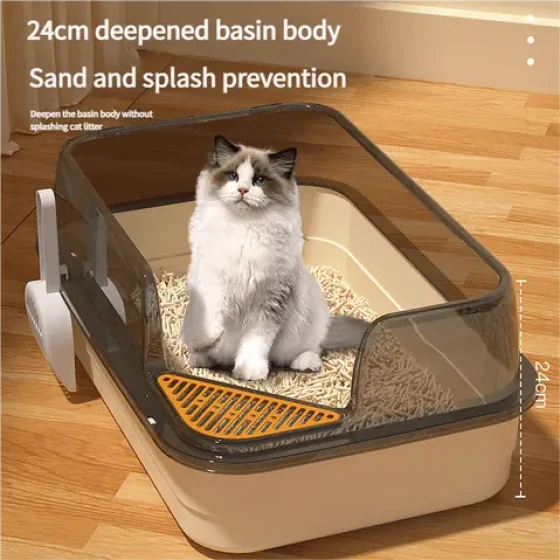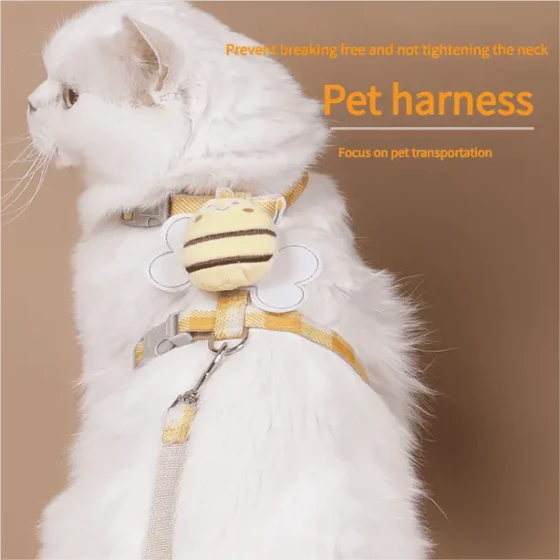What to do with cats when going home for the New Year_Complete guide to cat care during 15-day long holiday
Going home for the New Year is a joyful family reunion for us, but for cats who rely on us daily, it may be quite a "test." During the approximately 15-day long holiday, how can cats be settled so they are both safe and happy? This is a major concern for many cat owners. The core consideration is to ensure cats have enough food, clean water, accessible litter boxes, and a safe environment while minimizing their loneliness and stress. Depending on the cat’s personality, age, health, and family circumstances, there are mainly three options: ask someone to visit and care for the cat, send the cat to a pet boarding facility, or prepare thoroughly for the cat to stay alone at home (usually not recommended for more than a few days without human visitation).
Leaving home for a long time truly requires advance planning for cat care. Pet services during the Spring Festival may be very competitive and prices might rise sharply, so making arrangements early is always wise. The choice largely depends on your cat’s personality, your trusted resources, and your budget.

Option 1: Ask a reliable person to provide on-site care service
This is the top choice for many cat owners whose cats are not very adaptable or sensitive to environmental changes. Ask a trusted friend, family member, or book a professional cat-feeding service to visit.
- Advantages: Cats can stay in a familiar environment, experiencing less stress. Someone visits daily or every other day to promptly handle emergencies and provide companionship.
- Disadvantages: You need to find a reliable, experienced person. Friends or family may have inconvenient holiday schedules, and professional services tend to be more expensive, especially during the Spring Festival peak. Even professional services usually only visit once or twice a day, so cats are alone most of the time.
- How to do it?
- Select the right person: If a friend or family member, it's best someone the cat knows and does not resist. If professional service, evaluate reputation, platform reviews, work experience in advance and consider trialing a short-term service.
- Provide detailed instructions: Prepare a detailed "cat manual" including daily schedule, food amount, feeding times, preferred types of cat food and treats, favorite toys, taboos (such as what they cannot eat), personality traits (extroverted or shy?), hiding spots, etc.
- Prepare sufficient supplies: Stock enough cat food, canned food, treats, and litter placed in easily accessible spots.
- Leave contact information: In addition to your own contact, leave an emergency contact (e.g., a local friend) plus your veterinarian’s contact and address. Inform the caretaker how to handle symptoms like poor spirit, lack of appetite, vomiting, or diarrhea.
- Assign tasks: Clearly specify tasks for each visit such as changing water and food, cleaning the litter box, playtime duration, and grooming needs. Daily visits are recommended; for shy cats less frequent visits are acceptable, but at least every two days is prudent.
Option 2: Board the cat at a pet store or veterinary hospital
If no one can visit your home or you worry your cat will feel lonely alone, boarding is another choice.
- Advantages: Professional staff provide round-the-clock care, relatively safe, ensuring basic needs are met. Some boarding facilities have monitoring so you can remotely check on your cat.
- Disadvantages: Cats need to adapt to new environments, which may cause significant stress, reduced appetite, lethargy, or illness. Hygiene and management vary, with risks of cross-infection. Spring Festival boarding fees are generally higher; in first-tier cities, prices can range from tens to one or two hundred RMB per day, with luxury "cat villas" costing even more.
- How to do it?
- Research ahead: Don’t wait till the last minute. Start evaluating boarding facilities at least a month in advance. Visit in person to check cleanliness, ventilation, suitable cage sizes, cat activity space, professionalism of staff, and the state of other boarded cats.
- Understand details: Ask about feeding arrangements (whether they feed your supplied food), litter box use and cleaning frequency, and illness handling (partnered hospitals or your preferred vet, cost policies).
- Prepare items: Bring usual cat food (to avoid gastrointestinal issues), familiar blankets or toys (their scent can reduce stress), and immunization and health certificates.
- Trial stay (if possible): If time permits, arrange a short trial stay for a day or two before holidays to gauge your cat’s adaptation and put your mind at ease.
Option 3: Prepare thoroughly for cat to stay alone at home (higher risk, not recommended for long holidays)
Although cats are generally more independent than dogs, leaving one completely alone at home for 15 days carries great risk! This is strongly discouraged. If conditions absolutely prevent the first two options, you must prepare meticulously and preferably arrange at least one mid-holiday visit.
- Extensive preparations (necessary even if a caretaker visits):
- Food and water: Prepare multiple food bowls and water sources that your cat normally uses. Consider smart feeders set with portions and times but also keep extra bowls as backup. Water quality and quantity are very important; flowing water is preferred, so a pet water fountain is recommended, along with spare water bowls in case of malfunction or depletion. Place water and food bowls apart from each other and the litter box.
- Litter boxes: Cats love cleanliness; a dirty litter box can cause them to hold it or eliminate elsewhere. For a 15-day span, prepare at least 2-3 litter boxes (generally number of cats plus one), located in different areas. If possible, consider smart litter boxes but test their reliability before departure.
- Home safety: Thoroughly check for hazards! Put away fragile or dangerous items (medications, cleaning supplies), hide wires (cats may chew). Close all windows securely, especially in high-rise apartments, to prevent falls. Check for spots where cats might get stuck.
- Create a comfortable environment: Ensure indoor temperature is suitable (cats dislike cold; keep warm in winter with heated beds or heating/air conditioning, but mind safety and humidity). Provide enough toys (treat-dispensing balls, cat wands, crinkle toys), climbing and observation areas (cat trees, windowsills), to keep the cat active and entertained to reduce boredom and anxiety.
- Install monitoring: Set up pet cameras at home to check on your cat anytime and verify care visits. Some cameras include two-way audio so you can talk remotely to your cat.
- Emergency contact: Reiterate—leave contact info for a trustworthy person familiar with your cat and home, and inform them how to enter and handle emergencies.
Frequently Asked Questions (FAQ)
- Q: Can the cat be left unattended for 15 days?
A: Not recommended. Fifteen days alone is too long and poses major health and safety risks. Cats may develop severe stress and behavioral issues from prolonged loneliness and monotonous environment. Even with ample food and water, litter boxes may not stay clean, and sudden illness or accidents may go unnoticed and untreated. - Q: How much does pet boarding cost during the New Year period?
A: Boarding fees are higher than usual during the Spring Festival. Prices vary widely depending on city, facility level, and room size. Typically, daily fees range from a few dozen to 100-200 RMB; better conditions may cost two to three hundred RMB or more. Early inquiry and booking are advised. - Q: How to tell if a cat is adapting well to a boarding environment?
A: Observe the cat’s mood, appetite, and elimination. If the cat appears lethargic, hides, refuses food and water, vomits, has diarrhea, or behaves abnormally, it indicates poor adaptation and requires attention. Maintain communication with the boarding facility to learn about the cat’s daily status. - Q: Should I trim my cat’s nails before leaving?
A: If someone will visit or your cat is boarding, trimming nails beforehand can prevent injuries or furniture damage. However, if the cat stays alone at home, nails are essential for movement and self-defense, so full trimming is not recommended. - Q: Can I leave a lot of food and water at home for the cat to feed itself?
A: You can leave multiple portions as backups but cannot expect the cat to ration food for 15 days properly. Some cats eat all food at once, leaving none for later. Smart feeders are better but still require monitoring to ensure proper function. Provide diverse and abundant water sources to avoid water scarcity. - Q: Do I need to inform the cat caregiver if my cat is shy?
A: Absolutely! Detailed information about your cat’s shyness or tendency to hide is important so the caregiver won’t panic if they cannot find the cat and will understand the cat’s reluctance to interact, reducing disturbance and stress.
Summary:
Going home for the New Year to reunite with family is important, but we must not neglect the happiness and safety of our little companions—cats. For the approximately 15-day holiday, the best choice is to have trusted people or professional services care for your cat at home, or place them in a reputable, comfortable boarding facility. If forced to leave your cat alone, thorough preparation is essential: sufficient food and water, multiple litter boxes, comprehensive home safety checks, and strongly recommended mid-period visits or monitoring devices. Whatever option you choose, plan ahead, prepare well, select reliable caregivers or institutions, and leave detailed cat information and emergency contacts. This way, you can go home for the New Year with peace of mind, and your cat can safely and soundly spend this time. After all, when the "master" is safe at home, we can enjoy our holiday meals and drinks worry-free, right?



